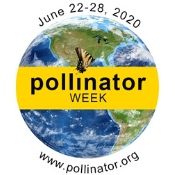| Supporting pollinators is good for business |
 |
| Wednesday, June 24, 2020 05:00 AM |
|
Landscape companies can help consumers make the best decisions for their yards to support pollinators, from building “drinking stations” for bees to using native plants in the yard. There are many things that homeowners can do to make their landscape a welcoming and healthy habitat for bees, hummingbirds, and other pollinators. Sharing this information helps pollinators, makes consumers feel better about their landscape and gives business owners a marketing opportunity. If your clients are interested in supporting pollinators in their landscape, the ALCC web site offers a page with helpful information. It features facts, videos, and links to research about bees and other pollinators. Readers can delve into the topics of bee health, attracting pollinators to the landscape, choosing pollinator-friendly plants. The three most important things that pollinators need are
Pollinator Partnership offers free guides tailored to your region that detail native pollinators, the plants they prefer, and where they like to rest. A variety of plants will attract and serve a variety of beetles, bees, butterflies, and more. The plants should be varied in color, height, and season of bloom. Planting in varied heights provides a canopy for some pollinators. Dead branches and grasses can provide shelter for some bees—it’s a great excuse to not clean up too thoroughly. Other insects need clear access to soil for nesting in the ground—further proof that diversity is key. Use available resources to find which variety is best for your region. Read more in this issue of Colorado Green NOW:
|

 This week, June 22-28, is Pollinator Week, but it’s always a good time to celebrate them. The public is eager to support birds, bees, and butterflies in their landscapes, so landscape professionals should be familiar with how to promote pollinator health in landscapes to serve consumer interest.
This week, June 22-28, is Pollinator Week, but it’s always a good time to celebrate them. The public is eager to support birds, bees, and butterflies in their landscapes, so landscape professionals should be familiar with how to promote pollinator health in landscapes to serve consumer interest.